It feels like 1×11 drivetrains have been around forever (go on, take a guess. No Googling mind. Answer* at the bottom of the review). I don’t think it would be too much of an exaggeration to say that they’ve revolutionised mountain biking. Riders have less to worry about when riding, cockpits have been tidied up, while designers have greater freedom in suspension design.
Wins all round then?
Except that the range of the first 1×11 cassettes (SRAM’s 10-42t ratio) was somewhat small at 420%, compared to a typical double chainring setup that offered over 475%.
Several companies have extended the range of their cassettes by simply making the largest cog bigger.
Latest Singletrack Merch
Buying and wearing our sustainable merch is another great way to support Singletrack
For 11-speed drivetrains there was Shimano’s 11-46t cassette (418%), and SunRace’s 11-50t ratio (454%). There have also been various hop-up kits from the likes of Wolf Tooth Components and OneUp, which modify an existing HG cassette by boosting the range with a larger in-board sprocket, while taking a smaller cog out from the bottom half of the cassette.
With the goal of trumping the front derailleur completely, SRAM added a cog to the whole shebang to make it 10-50t with its Eagle drivetrain (500%). And now Shimano is ‘leading’ the way with the 10-51t ratio on its latest XTR groupset (510%).
e*thirteen TRS Race Cassette
For the most part, everyone has been making the largest cog bigger, because there was no real way to make the smallest one any smaller, thanks to the pesky lock ring getting in the way. That is until e*thirteen joined the party and rewrote the rulebook.
The TRS Race is a wide range 11-speed cassette that offers a whopping 511% range. Even with one less cog, its vast range trumps both 12-speed SRAM Eagle and Shimano XTR.
Instead of upsizing to even bigger cogs at the low-end, e*thirteen achieves this range by simply shrinking the smallest cog to 9t.
Split-Block Design
To make this feat of engineering possible, the cassette is split into two gear clusters with the lock ring repositioned to the middle of the cassette body where it meets the threads of the SRAM XD driver. A special lock ring tool is (thankfully) included with the TRS Race cassette, which secures the large cluster down onto the freehub body.
The small gear cluster then mechanically locks into place on the large cluster with the aid of a chain whip. To unlock and remove, you’ll need a secondary chain whip.
Since the e*thirteen cassette is only compatible with XD drivers, existing Shimano drivetrain owners will want to check in with their wheel manufacturer to make sure they can source an XD option that’ll fit.
Less Grams
Overall it’s an ingenious and elegant solution, and the smaller cog offers numerous benefits – you can run a smaller chainring for increased ground clearance, and a shorter chain so there’s less chain flapping about. Consequently, the whole drivetrain can weigh a little less as well.
Speaking of weight, the TRS Race impresses at just 304g on the scales. That’s a lot lighter than the hulking SunRace MX80 11-50t cassette (526g) and Shimano’s 11-46t XT cassette (440g). Perhaps more impressive is that it’s even lighter than XTR 9100 (363g) and X01 Eagle (355g).
The larger cluster and lock ring are constructed from weight saving aluminium, while the smaller one is formed from high strength steel. The overall level of engineering and machine work is absolutely top notch, which it should be for over £300. Of note is that you can replace the large block (£129) and the small block (£209) separately.
Bigger Jumps
When installed, the teeth run 9-10-12-14-17-20-24-28-33-39-46, giving some pretty big jumps between certain gears. Other manufacturers make a big deal about keeping these gaps to a minimum to maintain a constant pedalling cadence (Shimano’s Rhythm Step ethos for example), and depending on the type of riding you do, this may or may not be an issue for you.
Here in the Lake District, the hills have a tendency to rock hard rather than roll gently, so these wider gaps aren’t so much of an issue for me. However, for my antipodean colleague Wil who is of a more XC persuasion, these gaps are more noticeable (or maybe he’s just got more sensitive legs).
It’s definitely worth considering, and is one of the reasons SRAM went down the route of 12-speed with Eagle. That extra cog reduces the jumps between the individual gears, but sometimes at the expense of shifting.
In my experience Eagle is fantastic out the box, but every bike I’ve ridden with it (granted, these have all been GX Eagle drivetrains) has drifted out of tune over time and is incredibly sensitive to rear mech alignment and cable tension. The Lake District is notoriously tough on bikes, and sometimes you can’t help glancing your rear mech off rocks. On an 11-speed drivetrain this is rarely an issue, and there is a lot more tolerance within the system.
Another thing to consider if we’re getting really techy about it all, is the decreased efficiency of the smaller cogs, brought about by increased frictional losses. This is one reason why some pro road cycling teams are starting to move the other way and run larger cogs, chainrings, and even jockey wheels, especially on time trial bikes.
We’re only talking about losses of 1-5w though, which for the average rider isn’t something worth thinking about – there are plenty of other places I could gain those lost watts back before worrying about the number of teeth on my smallest cog, and I never noticed it in testing.
Shift Performance
I’ve matched the cassette with a Shimano Deore XT shifter, SLX rear mech, and an 11-speed chain. On the whole, the shifting has been great. There is a nice positive clunk as the chain moves both up and down the block, with no skipping under power. I wouldn’t say the shifting is quite as slick as a finely tuned Shimano drivetrain, but then not much is.
Though everything was hunky-dory to begin with, a couple of months into the test period the chain decided it would occasionally refuse to shift down from the 46t to the 39t cog. It was only on this one shift, and it seemed unusual as I’ve not heard of any other e*thirteen cassettes performing this way. After cleaning up some of the drivetrain filth, adding a touch more B-tension and a slight turn of the barrel adjuster, everything returned back to normal.
While I only used the TRS Race cassette with a Shimano 1×11 drivetrain, I know of other riders who are using this cassette with SRAM 1×11 drivetrains too. You’ll need a little more B-tension on the derailleur to accommodate the jump from a 10-42t cassette to the 9-46t cassette, but otherwise everything is designed to line up nice and neatly.
Durability
After six months of testing, wear on the teeth is looking good. With the three largest cogs being made from alloy though, they will wear faster than the steel cogs. It’s quite useful then that you can replace that alloy block on its own.
We have heard of other riders experiencing noise while riding with some of e*thirteen’s earlier cassettes, which has been traced back to the connection points between the two halves of the cassette. I’ll point out that I’ve had zero noise from this test cassette during my time with it, though I did use the installation grease as described in the instructions. Not only has it been silent, but everything has remained rock-solid, with no movement whatsoever.
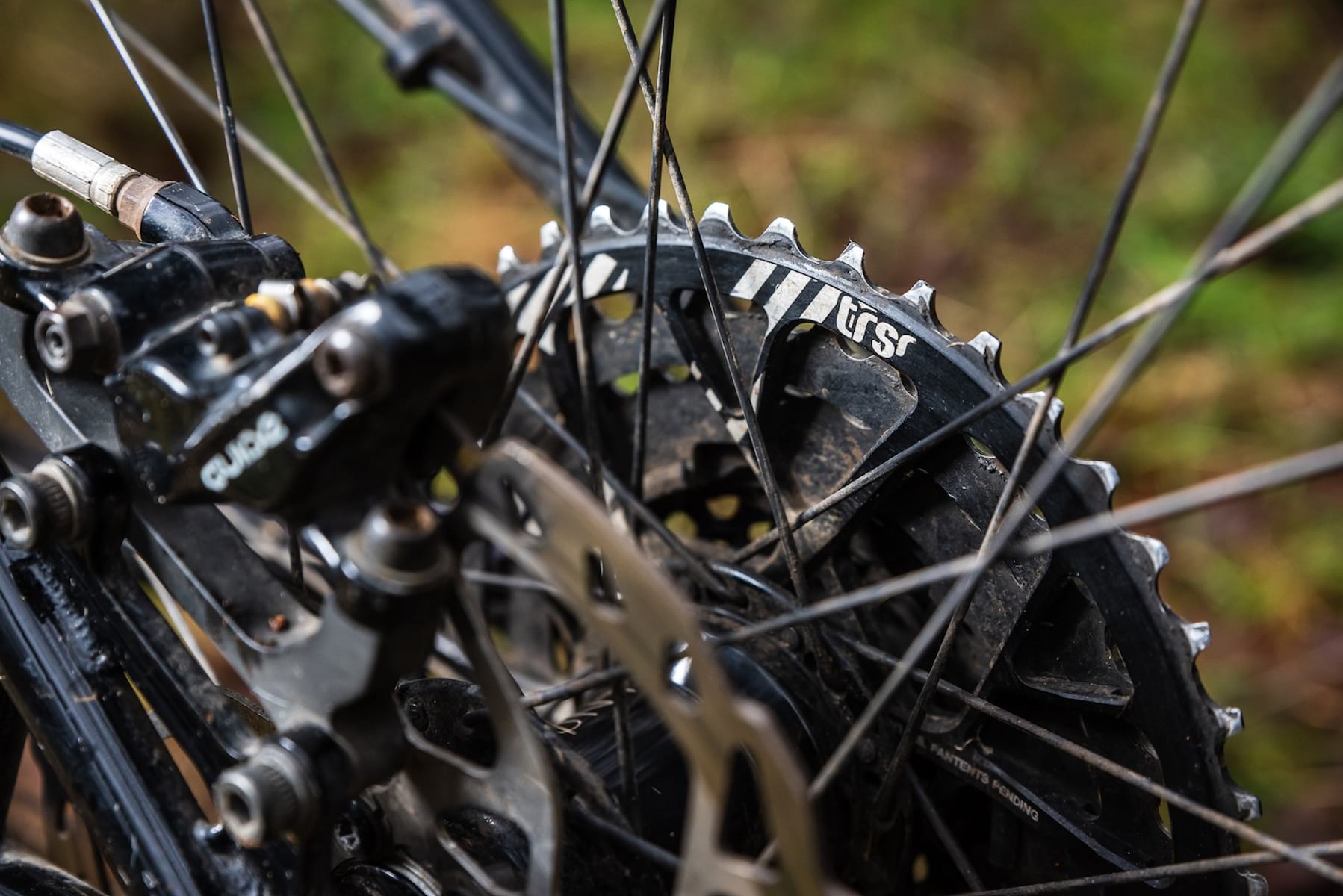
Overall
If you’re keen on extracting the maximum range from your existing 1×11 drivetrain, without splashing out on SRAM Eagle or Shimano XTR, and your legs can survive without the optimum steps between gears, then this cassette is definitely worth a look.
It plays nicely with your existing shifters, is lightweight, and the wear so far has been good. While it works well as a bolt-on upgrade to an existing 1×11 setup, in order to take full advantage of the 9-46t ratio, you really want to be running a smaller chainring – ideally a 30t or even a 28t if you ride in particularly mountainous regions.
Aside from that, the only negative mark against this engineering marvel, is the price. At £329, there’s no denying it’s expensive. It is cheaper than an XX1 Eagle cassette though, and of course the TRS Race may work out even cheaper if it saves you from buying a full 1×12 drivetrain.
*Answer: SRAM introduced the 1×11 drivetrain back in 2012 with XX1. So now you know.
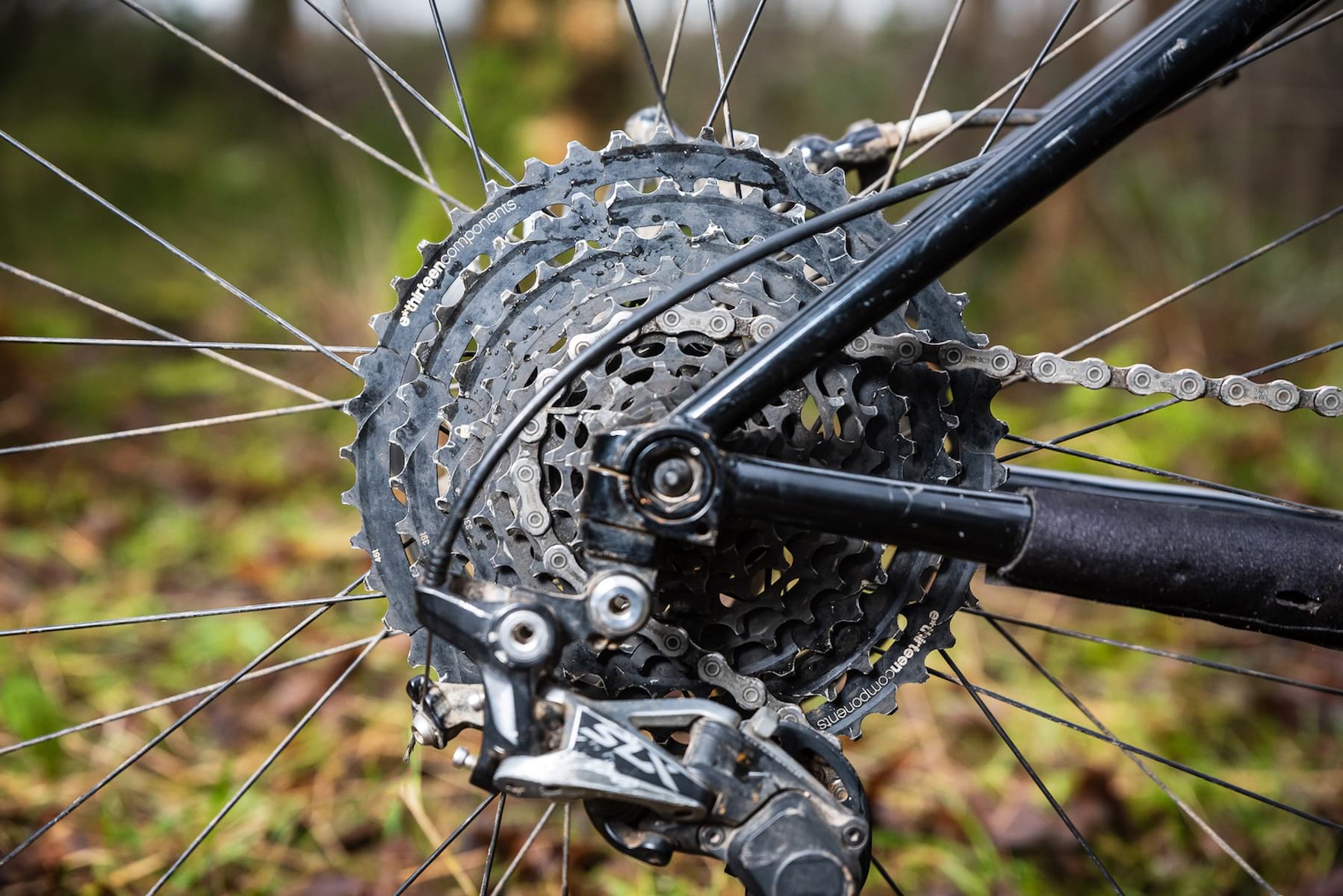





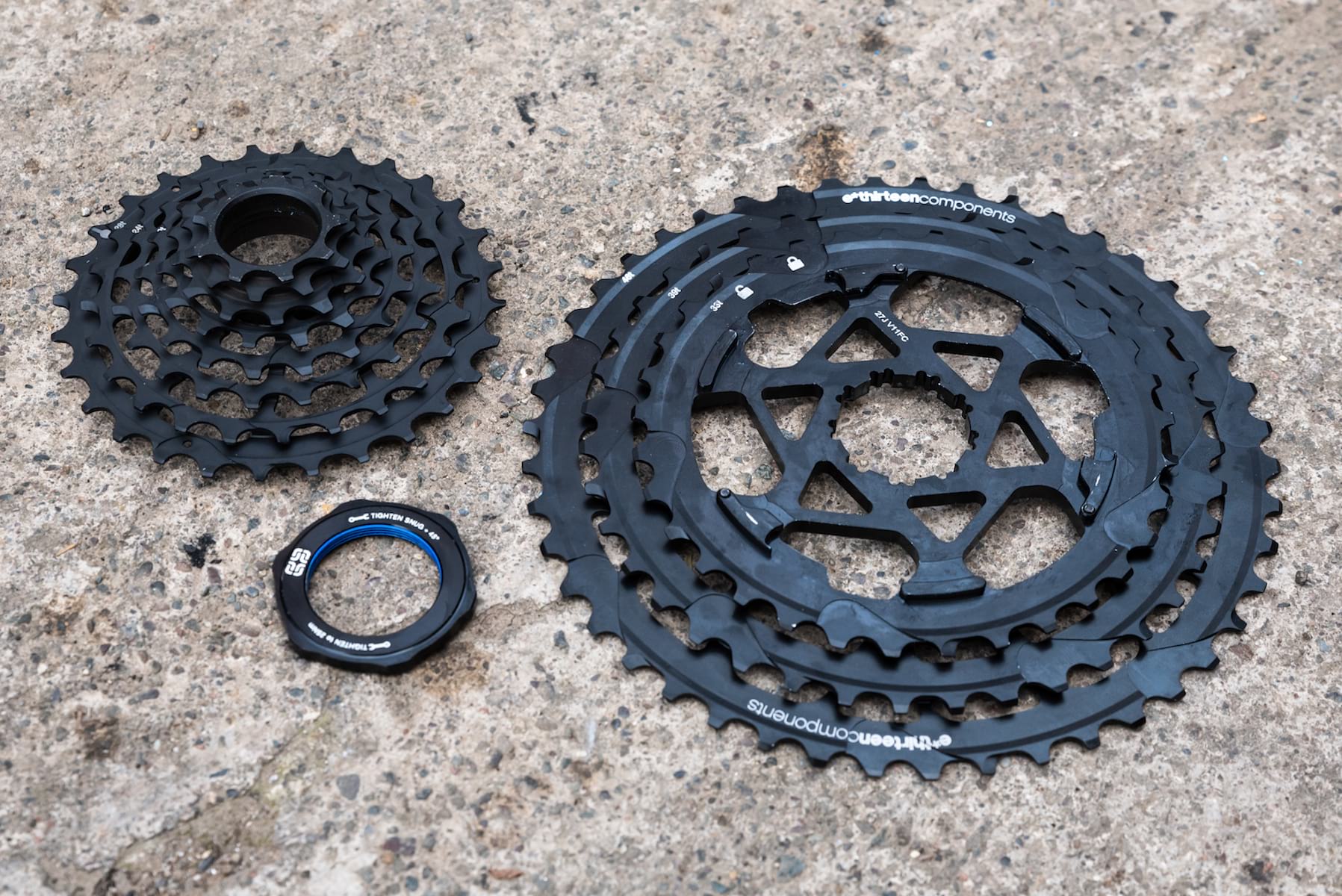
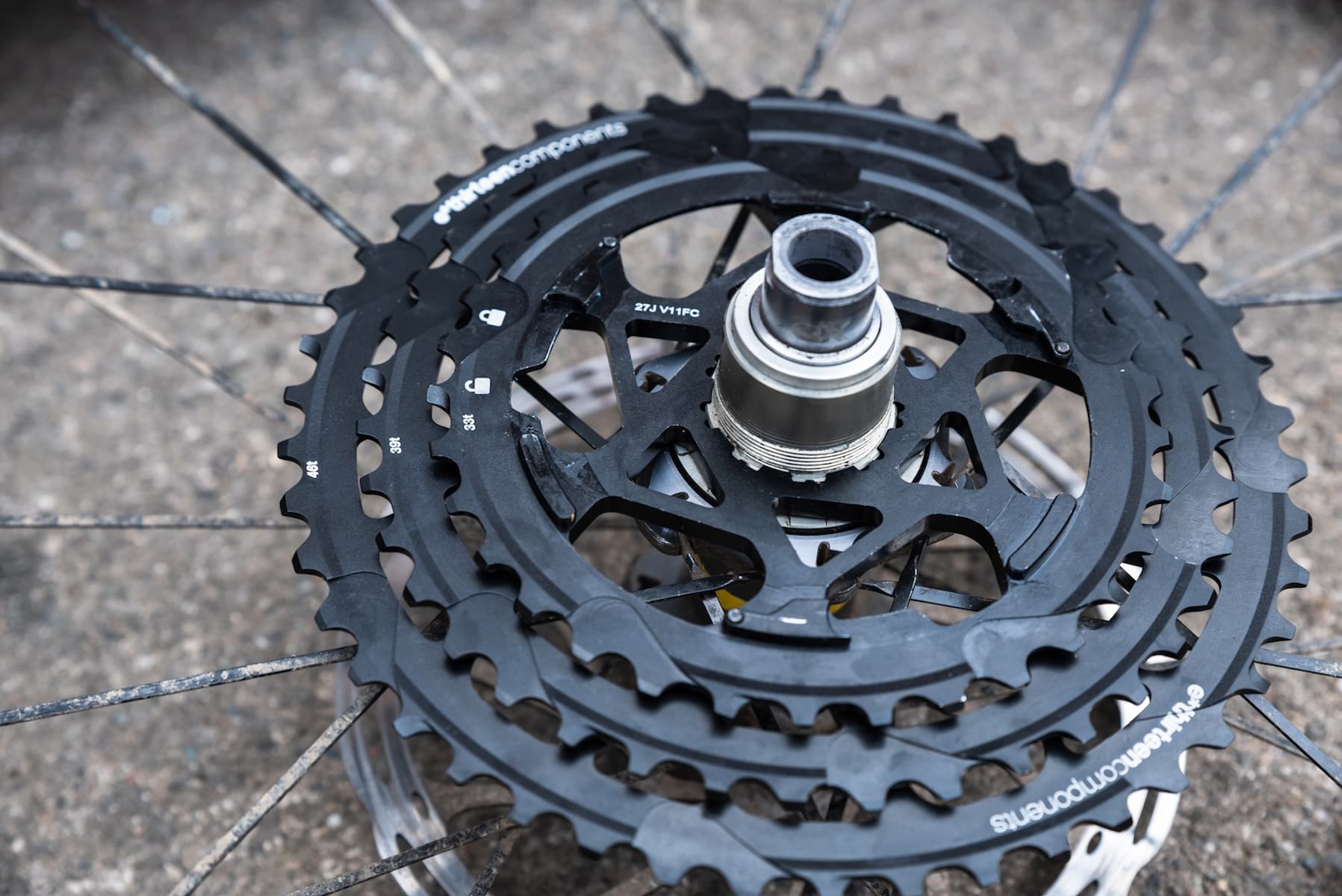
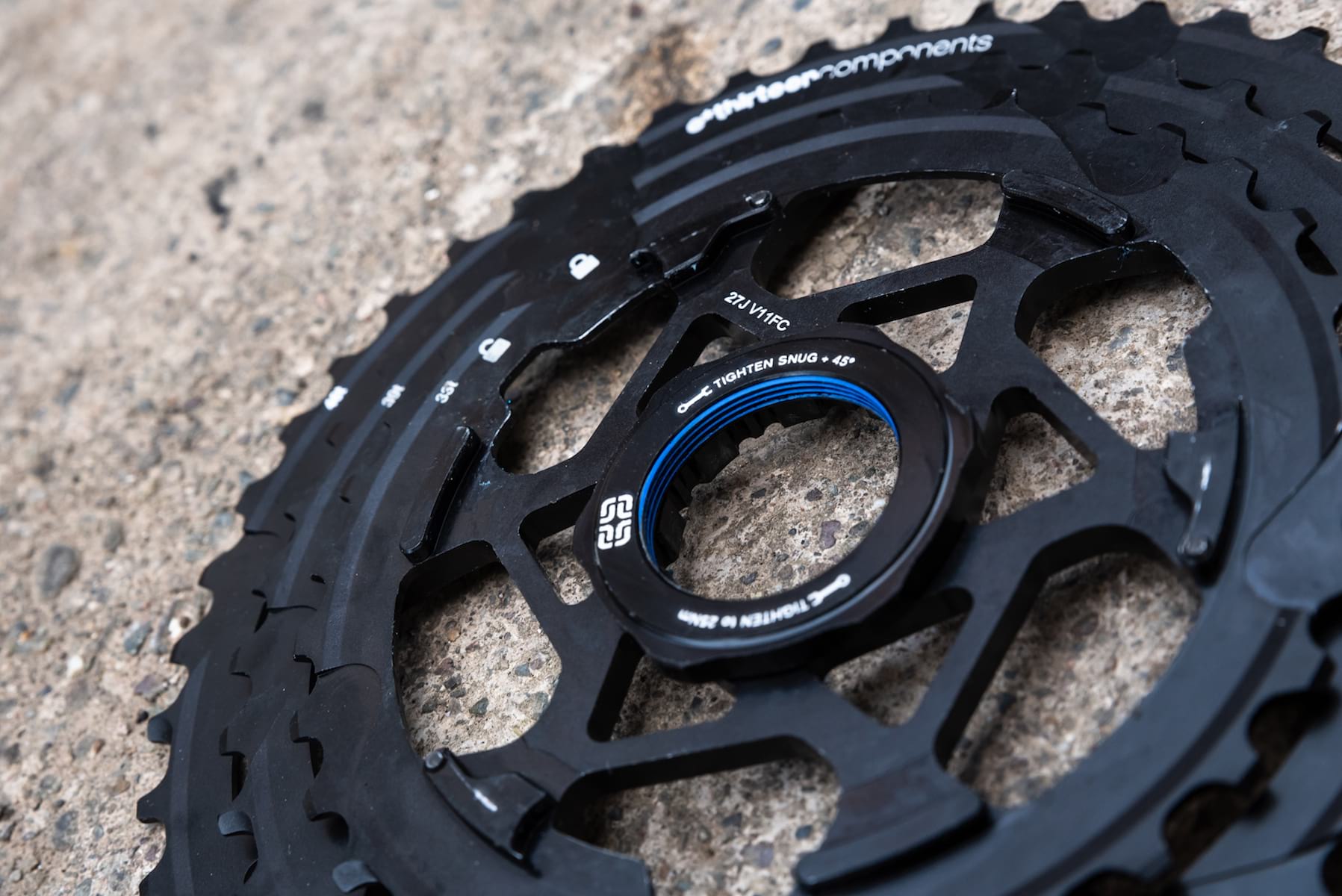
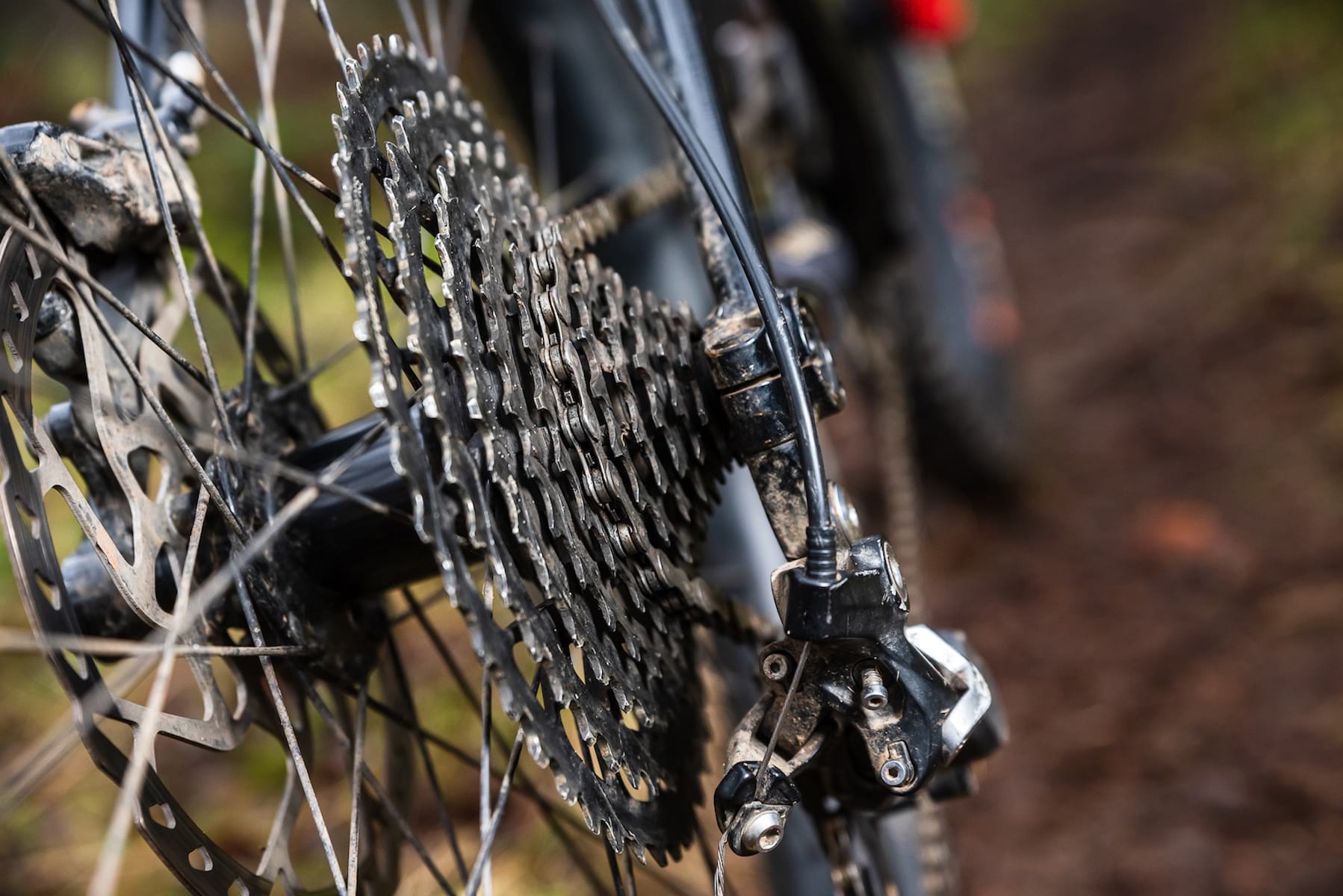
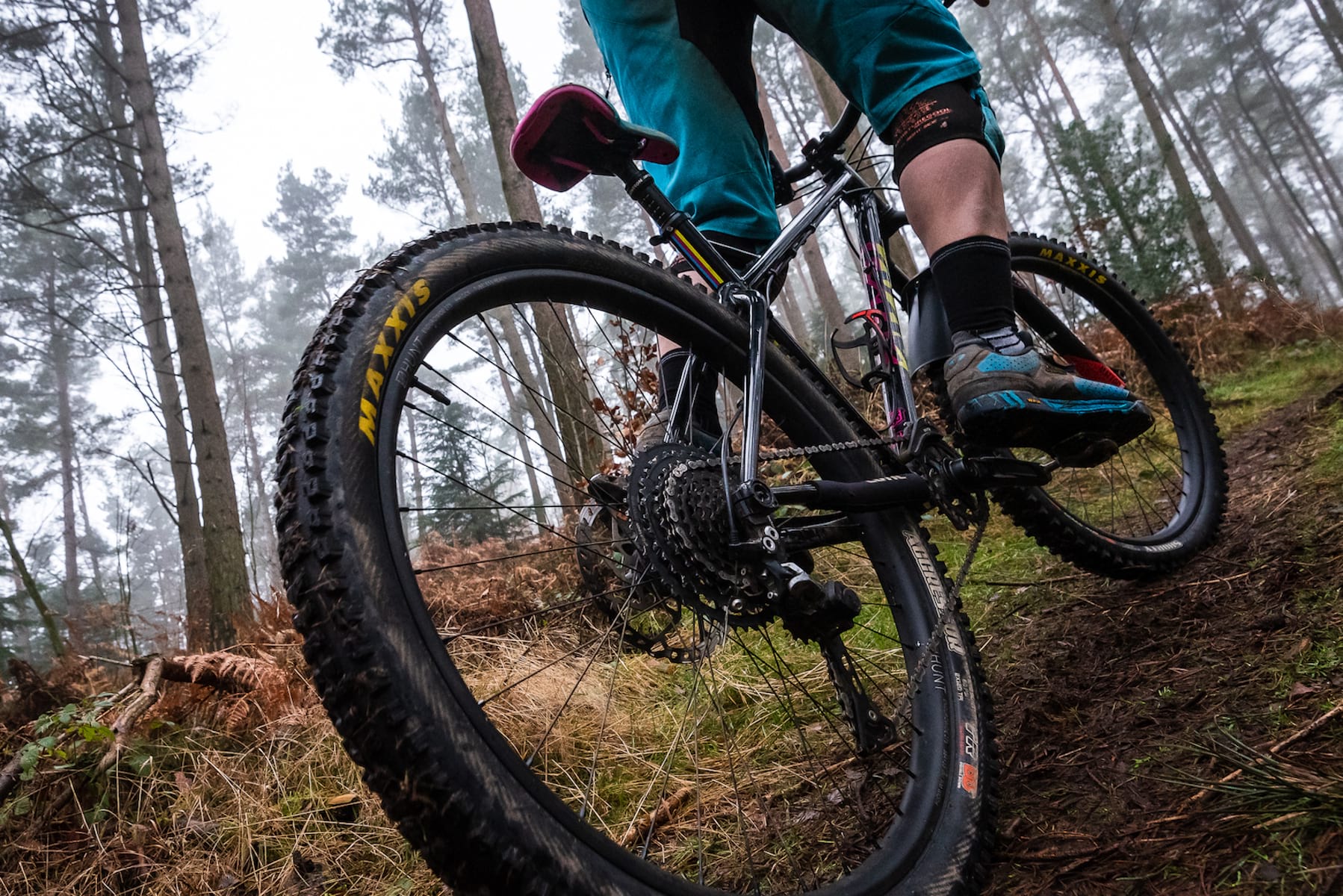
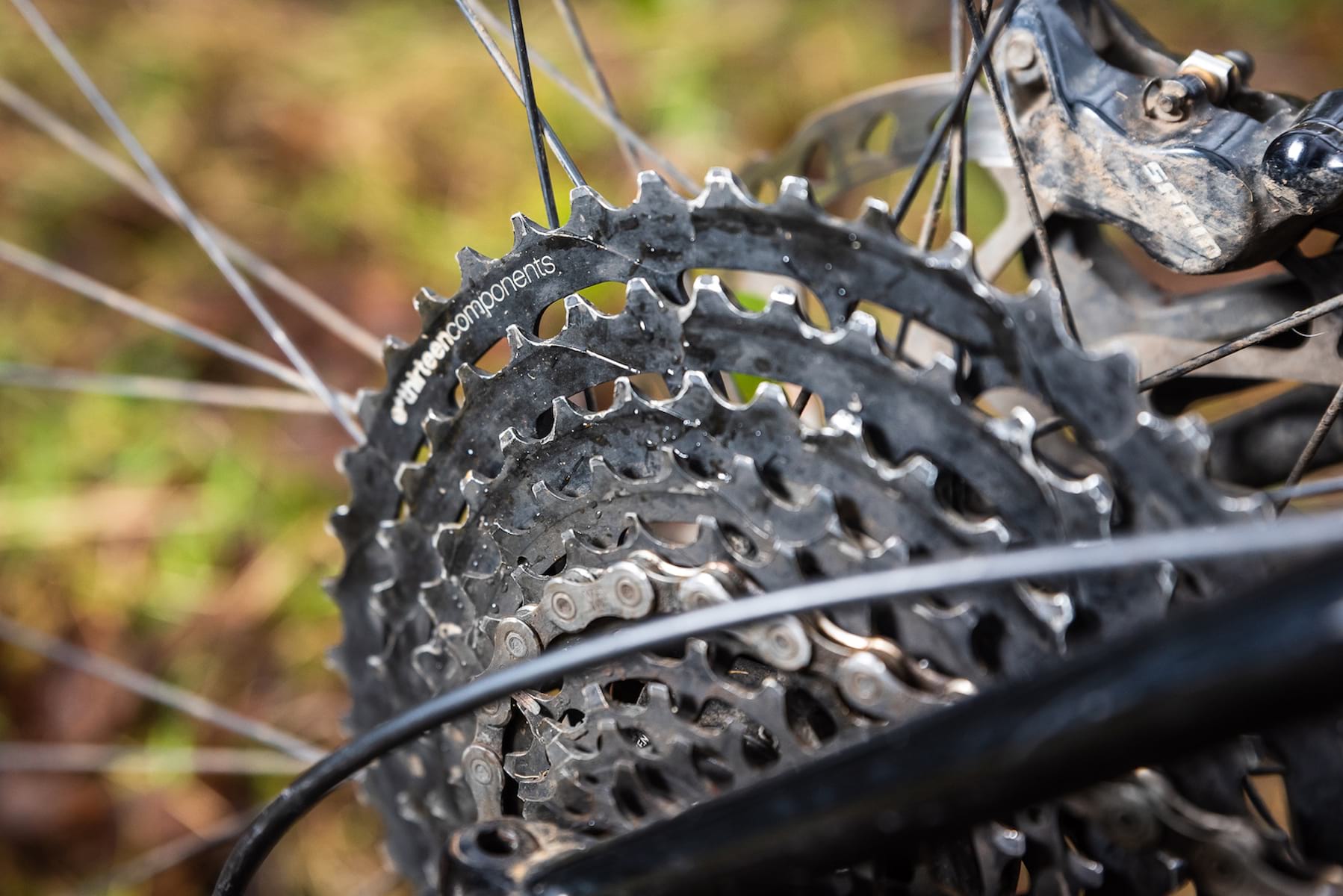
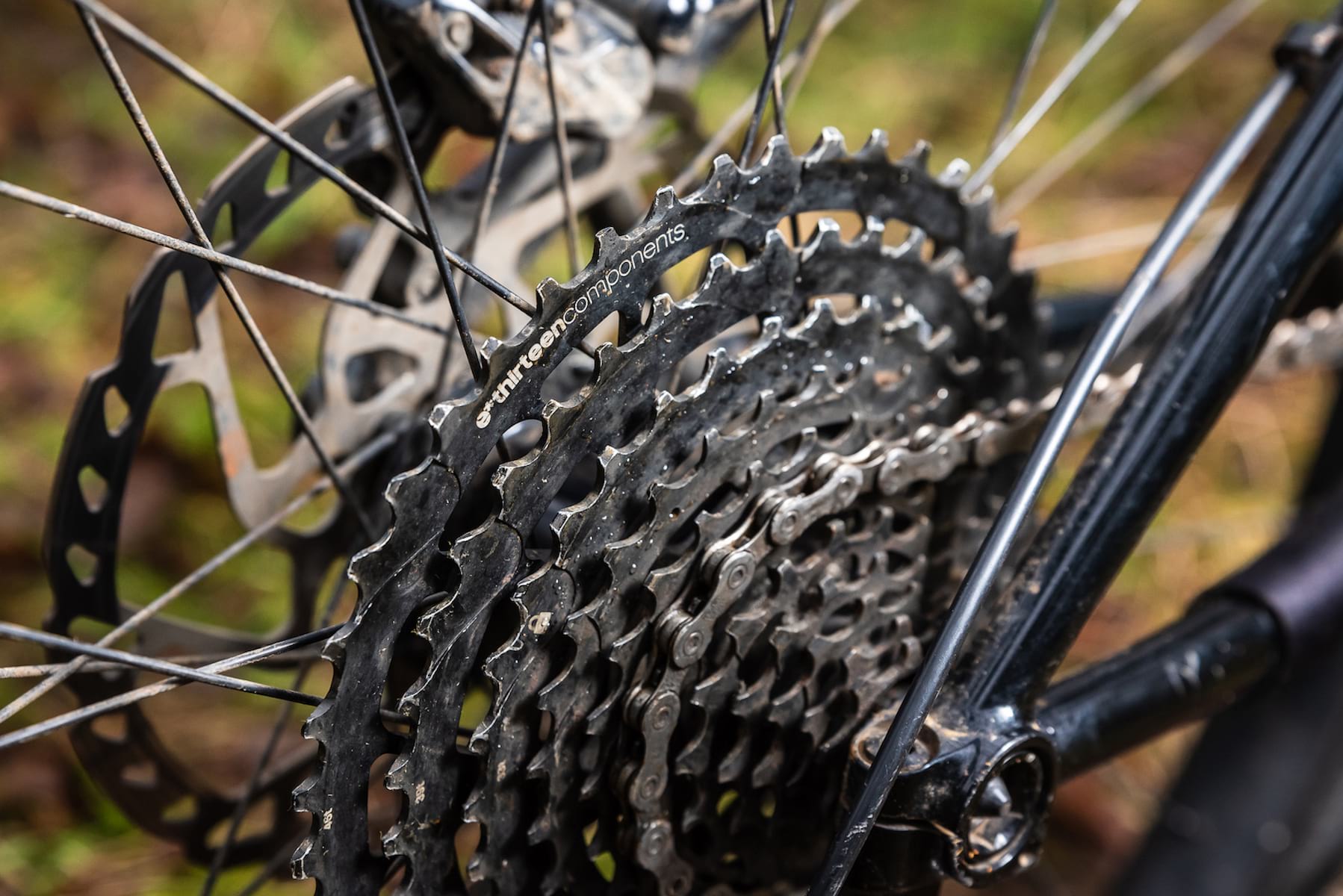
Both Sram and Shimano agree that the polygon effect is too pronounced on a 9T sprocket. Your efficiency loss figs seem optimistic?
I honestly can’t see the value in a £300 consumable when you could get GX Eagle for around the same amount. I was curious for my hardtail until I saw the price.
Added to the fact that eagle and the new xtr allow a larger chainring that would potentially provide less chain influence on the suspension of most bikes than the smaller chainring route. (still on xt 11-46 with a32 tooth ring so not an evangelist)
“In my experience Eagle is fantastic out the box, but every bike I’ve ridden with it (granted, these have all been [X01] Eagle drivetrains) has drifted out of tune over time and is incredibly sensitive to rear mech alignment and cable tension”
– agree
I would agree that 9 tooth is to small or tight to wrap a chain and keep efficient, but that’s just my thinking. Also why a 1 tooth jump between 9 & 10 , if your down that end then 1 tooth doesn’t make make much of a step difference, it would be better to spread out more I would have thought.
Finally I do wish the % range figure hadn’t become ‘The’ number to chuck around in the gearing war, its probably the least important number – Gear Ratios are better as is the High and Low teeth count and the steps in between the middle, high and low ends depending on what riding you do. by way of proof that 1 tooth drop to 9 tooth makes quite a big difference in the % number but in reality very little difference in use (I would argue)
“in order to take full advantage of the 9-46t ratio, you really want to be running a smaller chainring – ideally a 30t or even a 28t”
Why? I don’t understand this statement. Surely it just depends on what gear ratios you want? I run a 1×11 system with a 10-42T SRAM X01 cassette and a 36T chainring. Using an online gear ratio calculator (on Sheldon Brown’s site) I was able to replicate almost the full range of my previous 3×11 setup, which is the main reason I made the change to get the weight saving and the clearer bike/cockpit. I’ve never used the largest cassette ring at the back, either.
It would certainly be interesting to try a 9T cassette ring, although I guess it will wear out quite quickly and be more prone to chain skipping at an earlier stage of wear.
My last experience of a cassette with more than one aluminium sprocket was to duly change the chain at 0.75% stretch and find one of the alu sprockets was too worn to use any more. So not paying £300 to find out if this is same!
Also tend to agree this doesn’t have great MTB cog spacing – for road riding against wind resistance you want close ratios between the small sprockets, I find for MTB I’m more interested in closer steps when climbing. Sunrace and Sram seem to have it right to me.